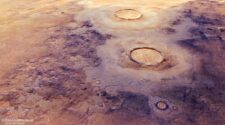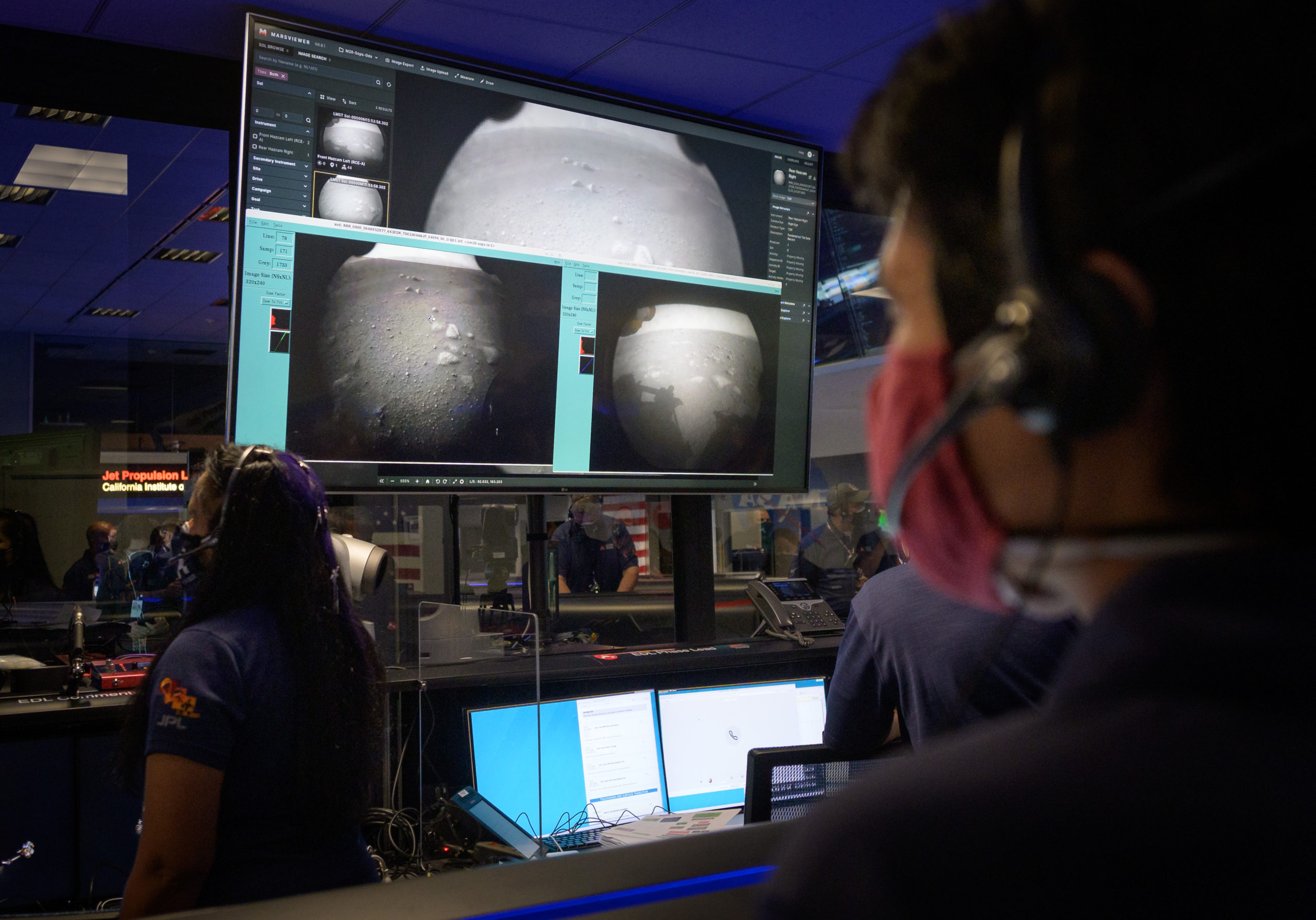
After enduring the harrowing ‘Seven Minutes of Terror’ plunge through the Martian atmosphere following a seven-month interplanetary journey NASA’s Perseverance rover nailed her nail-biting landing on Mars Thursday afternoon, Feb. 18, and transmitted the first two images just moments later from the floor of the Jezero Crater landing site to reveal an alien but scientifically bountiful terrain she will explore in search of ancient microbial life.
Perseverance is the most powerful and sophisticated robot ever dispatched from Earth to the most daring, difficult, and scientifically rewarding landing site ever attempted by the agency on the surface of the Red Planet at Jezero crater – that simultaneously begins the first leg of a truly groundbreaking astrobiology mission aimed at collecting pristine soil and regolith samples that will be returned to Earth a decade from now in search of tell-tale signs of past life.
Confirmation of the successful touchdown was announced in mission control at NASA’s Jet Propulsion Laboratory in Southern California at 3:55 p.m. EST (12:55 p.m. PST), during a live broadcast on NASA TV.
“Touchdown confirmed!” said the JPL commentator at the moment the safe touchdown was confirmed.
Everything in the hugely complex entry, descent, and landing (EDL) sequence worked perfectly.
“I’m safe on Mars. Perseverance will get you anywhere,” Perseverance tweeted post-touchdown from Jezero Crater.
I’m safe on Mars. Perseverance will get you anywhere.
— NASA's Perseverance Mars Rover (@NASAPersevere) February 18, 2021
NASA’s one-ton Perseverance rover along with the Ingenuity Mars Helicopter attached to its belly was barreling towards the Red Planet today when it smashed into the Martian atmosphere at 3:48 p.m. EST (12:48 p.m. PST) at 12,000 MPH (19,500 kph) to begin the harrowing ‘7 Minutes of Terror’ plunge on a do or die mission that had to slow down swiftly via friction, the heat shield, supersonic parachutes and retro rockets on the Skycrane that then lowered the rover on tethers in the final seconds ultimately ending in a precision-guided soft touchdown at Jezero at just 2 MPH.
The largest, most advanced rover NASA has sent to another world touched down on Mars after a 203-day journey traversing 293 million miles (472 million kilometers) of interplanetary space since launching in July 2020 after surviving the fiery descent through the thin Martian atmosphere and scorching heats up to some 2,370 degrees Fahrenheit (about 1,300 degrees Celsius) during the nail-biting plunge.
Cheers erupted in mission control at NASA’s Jet Propulsion Laboratory as controllers confirmed that NASA’s Perseverance rover and the Ingenuity Mars Helicopter attached to her belly touched down safely on Mars exactly as planned.
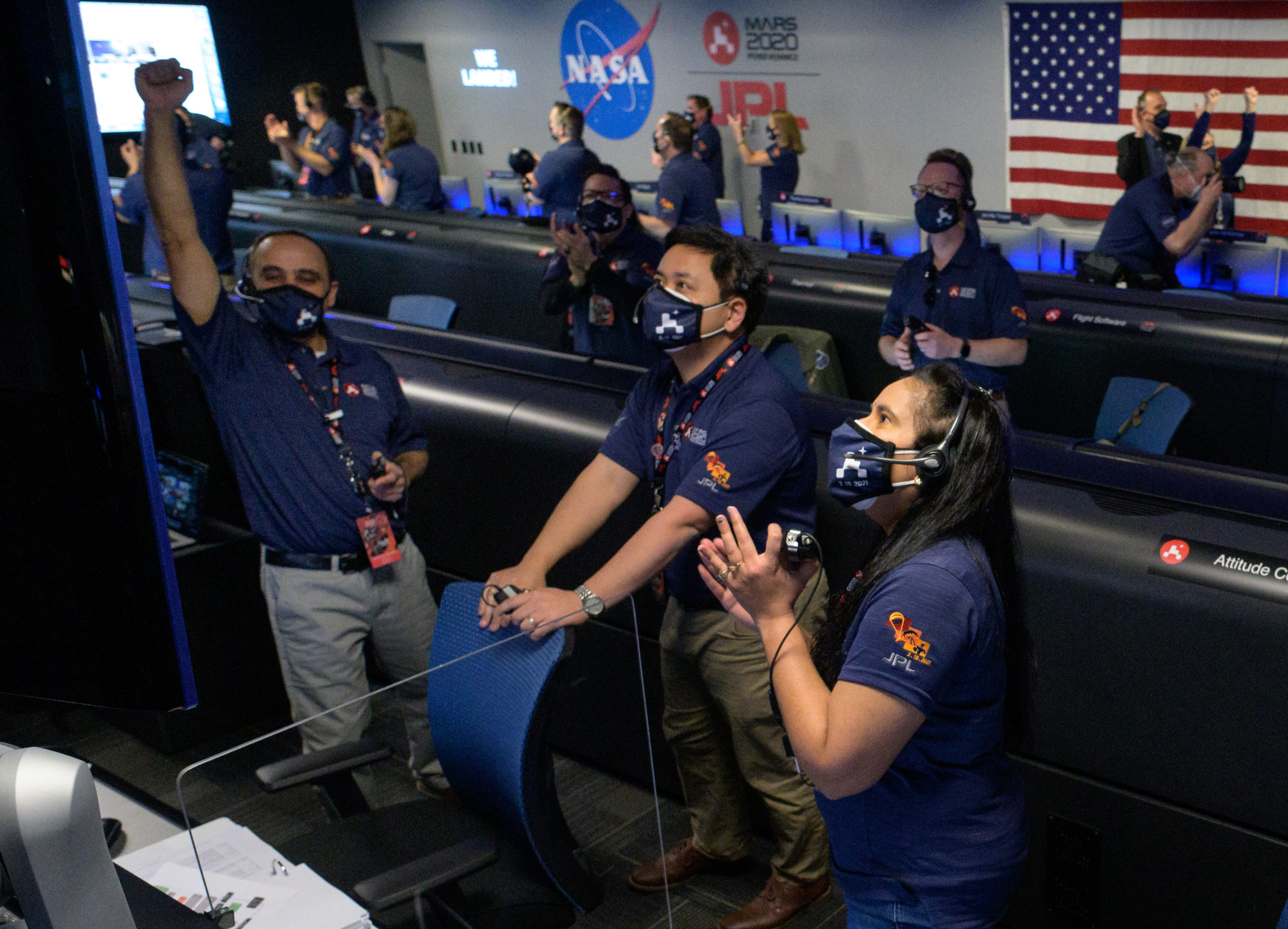
President Biden quickly congratulated the NASA and JPL teams post landing via tweet:
“Congratulations to NASA and everyone whose hard work made Perseverance’s historic landing possible. Today proved once again that with the power of science and American ingenuity, nothing is beyond the realm of possibility,” tweeted President Biden, along with a photo of him watching the landing live.
Congratulations to NASA and everyone whose hard work made Perseverance’s historic landing possible. Today proved once again that with the power of science and American ingenuity, nothing is beyond the realm of possibility. pic.twitter.com/NzSxW6nw4k
— President Biden (@POTUS) February 18, 2021
Biden also called acting NASA Administrator Steve Jurczyk while he was being interviewed by the media.
“His first words were ‘Congratulations, man,’ and I knew it was him,” Jurczyk said to media about the surprise call from President Biden.
“He talked about how proud he was of what we had accomplished.”
“He was as psyched as I am,” Jurczyk exclaimed.
Perseverance is the agency’s ninth mission to land on the Red Planet and the fifth rover after Sojourner, Spirit, Opportunity, and Curiosity.
The rover quickly transmitted back the first two raw images taken by the front and rear hazcam cameras – with the lens caps still on in order to protect the cameras from dust thrown up by the eight landing thrusters on the descent stage during sky crane maneuver.
And another look behind me. Welcome to Jezero Crater. #CountdownToMars pic.twitter.com/dbU3dhm6VZ
— NASA's Perseverance Mars Rover (@NASAPersevere) February 18, 2021
“Wow. Just an amazing, incredible day,” said acting NASA Administrator Steve Jurczyk at a post-landing briefing at JPL. “I could not be more proud of the team and what they’ve accomplished under challenging circumstances.”
“This landing is one of those pivotal moments for NASA, the United States, and space exploration globally – when we know we are on the cusp of discovery and sharpening our pencils, so to speak, to rewrite the textbooks.”
“The Mars 2020 Perseverance mission embodies our nation’s spirit of persevering even in the most challenging of situations, inspiring, and advancing science and exploration. The mission itself personifies the human ideal of persevering toward the future and will help us prepare for human exploration of the Red Planet.”
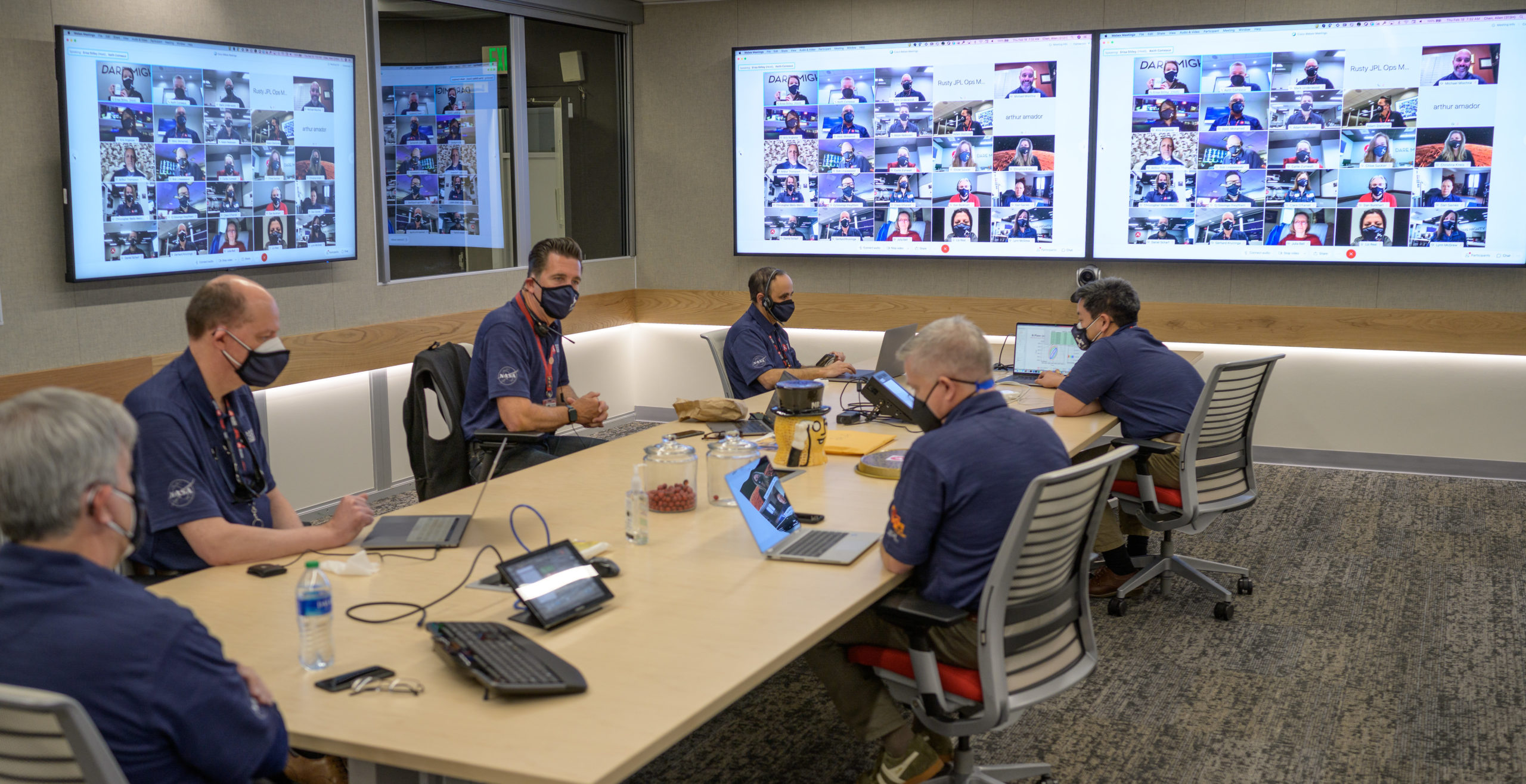
Perseverance counts as the last of three spaceships from Earth launched last summer, and successfully concludes the arrival of the Martian invasion fleet following the successful orbital arrivals of the UAE Hope orbiter and the China Tainwen-1 spacecraft last week on Feb 9 & 10.
“Because of today’s exciting events, the first pristine samples from carefully documented locations on another planet are another step closer to being returned to Earth,” said Thomas Zurbuchen, associate administrator for science at NASA.
“Perseverance is the first step in bringing back rock and regolith from Mars. We don’t know what these pristine samples from Mars will tell us. But what they could tell us is monumental – including that life might have once existed beyond Earth.”
Critical to Perseverance landing success was the development and inclusion of new hazard avoidance navigation technology called the Terrain-Relative Navigation (TRN) system that autonomously guided the spacecraft during the final descent. TRN is an advance over Curiosity.
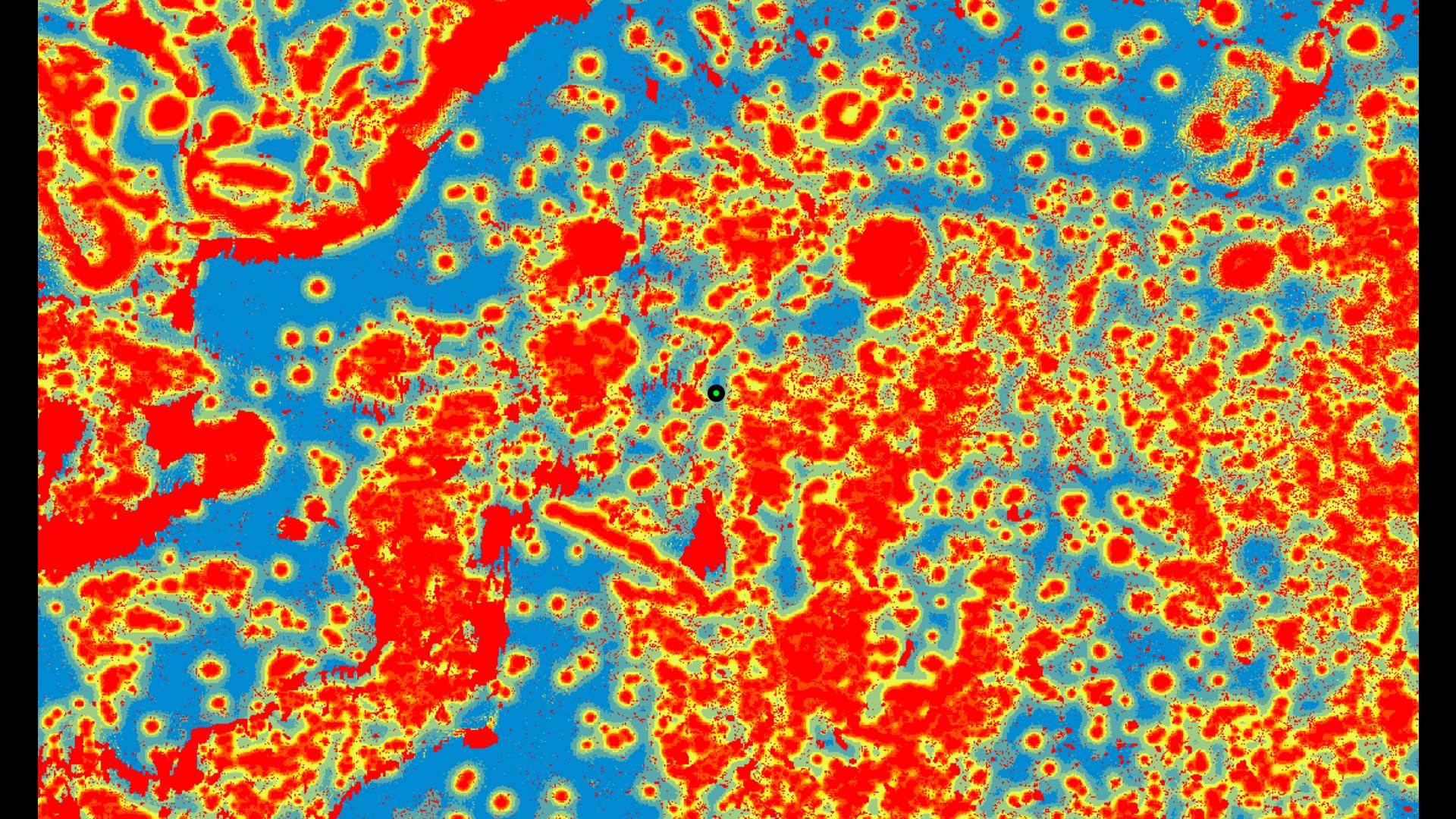
The Perseverance Mars 2020 mission will search for signs of past microbial life, characterize Mars’ climate and geology, collect samples for a future return to Earth, and pave the way for human exploration of the Red Planet.
Also aboard is Ingenuity, a twin-rotor, solar-powered helicopter attached to the belly of the rover, will become the first aircraft to fly on another world.
The rover will spend at least one Mars year (two Earth years) exploring the landing site region.
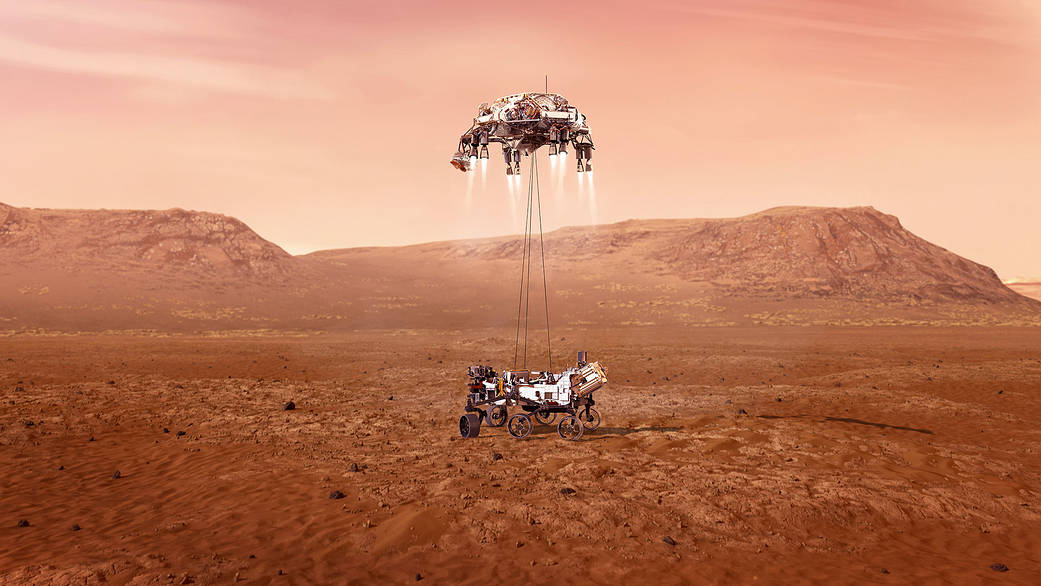
Mars 2020 is the first leg in a multi-mission astrobiology joint venture with ESA (European Space Agency) to return surface samples back to Earth as soon as 2031. Equipped with a Sample Caching System to collect rock and regolith (broken rock and dust), Perseverance will drill into the surface at Jezero and store the samples inside 43 collection tubes for retrieval by a future robotic Mars explorer.
“Perseverance is our robotic astrobiologist, and it will be the first rover NASA has sent to Mars with the explicit goal of searching for signs of ancient life,” said Zurbuchen, at a media briefing Feb 16. “It will build upon what we currently know from our previous rovers, orbiters, and landers. And it will attempt to answer an age-old question that has eluded humanity for generations: whether life has ever existed elsewhere beyond our own planet, our Earth.”
Three future missions currently in the planning stages by NASA in collaboration with the European Space Agency (ESA) will work together to bring the samples back to Earth, where they will undergo in-depth analysis by scientists around the world using equipment far too large and complex to send to the Mars at this time.



